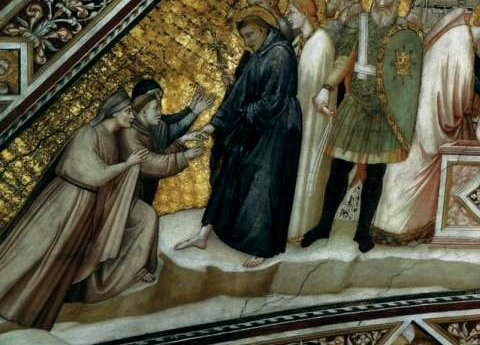'Our poet was of moderate height, and, after reaching maturity, was accustomed to walk somewhat bowed, with a slow and gentle pace, clad always in such sober dress as befitted his ripe years. His face was long, his nose aquiline, and his eyes rather large than small. His jaws were large, and the lower lip protruded beyond the upper. His complexion was dark, his hair and beard thick, black, and curled, and his expression ever melancholy and thoughtful.' Giovanni Boccaccio: The Life of Dante.
 .
.If only life, and art criticism, was that simple! First, the attribution. There is no real evidence that Giotto was the artist: art of high quality from this period is often ascribed to Giotto. However, it is well known that Dante and Giotto were well known to each other, maybe even friends, which does make the attribution more convincing.
Is it Dante? Boccaccio's description is of a rather older Dante, but it does match the image on several respects, especially that nose. But why is it in the Magdalene chapel in the Bargello?
The image forms part of a two-part fresco, showing Hell and Paradise. Dante and others are the saved, and are on their way to Paradise.
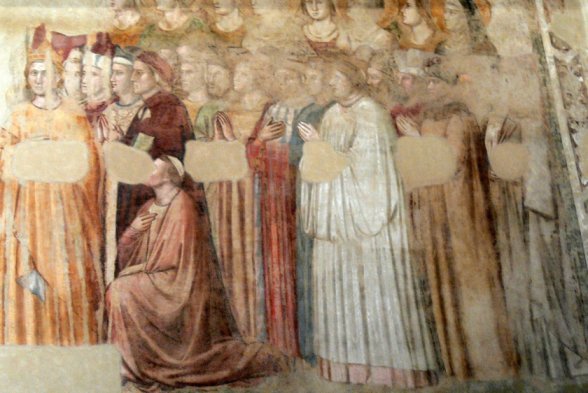
The building now known as the Bargello museum was begun in 1265, as an administrative building, the Capitano del Popolo. By the 1320s they contained law courts. According to documentary evidence the frescos in the Magdalene chapel date from 1322: convicted criminals due for execution received their last rites here, and the Heaven or Hell frescos would certainly have given them something to contemplate.
Now this raises a problem. Various historians claim that the Dante portrait was painted by Giotto 'before Dante was exiled from Florence.' Clearly this isn't the case: Dante departed Florence in 1302, and it was painted just after his death in 1321. So, in an image intended as an object lesson to offenders, why would Dante, who himself had been condemned to death in his absence, be shown as one of the saved on his way to Paradise?
Of course, in the light of Dante's increasing fame, the Florentines began to regret their treatment of him. Perhaps the fresco was reworked at a later date to include him.
During the 1350s, across town in Santa Maria Novella, Nardo da Cione was busy decorating the Strozzi chapel. Florence's new-found appreciation of Dante is made clear here. Here's Dante, with that familiar nose, in a last judgement scene: once again he is on his way to Paradise. By this point his authorship of Paradiso was well known.

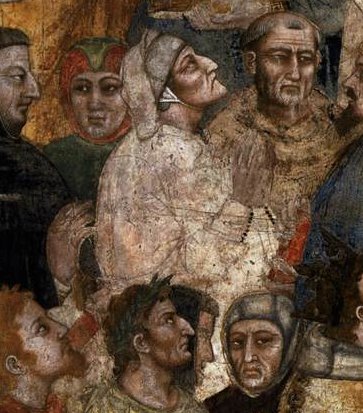
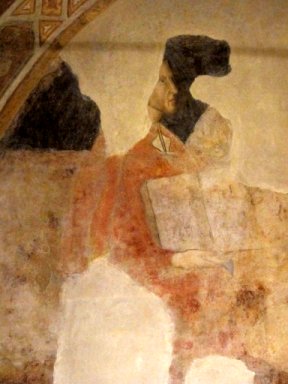
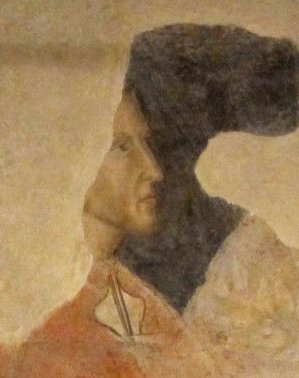
Could this be the first image of him? Would Dante have been impressed? Well, he was certainly impressed with Giotto:
Once, Cimabue
thought to hold the field,
In painting; Giotto's all the rage today,
The other's fame lies in the dust concealed.
Purgatory, book XI

